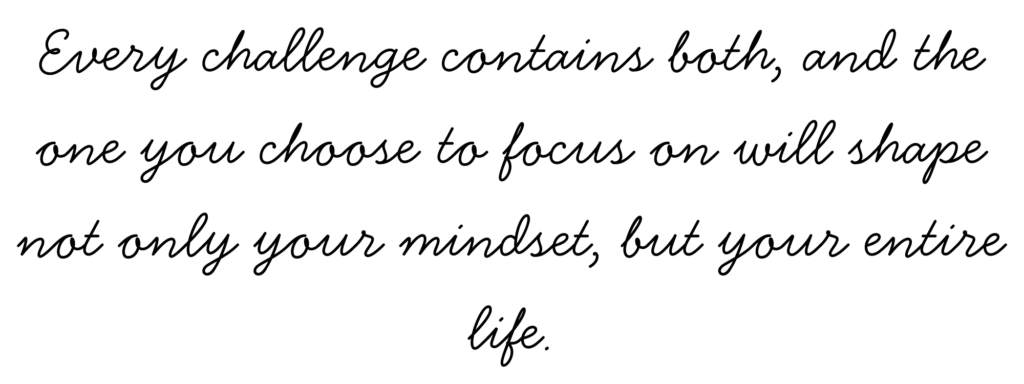Every day, life presents us with choices. Some are small—like what to eat for breakfast—while others carry more weight, like career decisions or personal challenges. But no matter the size, there’s always one constant: the way we choose to look at things.

Some people look at a situation and see only obstacles. Others see opportunities hidden within the same circumstances. The difference isn’t luck, intelligence, or privilege—it’s mindset.
Training your mind to see possibilities instead of problems is one of the most powerful shifts you can make. It doesn’t change the reality of challenges, but it transforms how you respond to them. And often, your response is the very thing that shapes the outcome.
The Problem-Focused Lens
When difficulties come, our brains tend to default to survival mode. Problems feel like threats, so we zoom in on them. This is why you might lie awake at night replaying a mistake or worrying about something that hasn’t even happened yet.

A problem-focused mindset sounds like this:
- “What if I fail?”
- “This always happens to me.”
- “I’ll never figure this out.”
Focusing only on problems narrows your vision. It makes the challenge seem bigger than it is and hides possible solutions. It’s like standing too close to a wall—you can’t see what’s on the other side.
The Possibility Lens
A possibility-focused mindset doesn’t ignore the problem. It acknowledges it but also asks: “What else could be true here?”

Instead of spiraling into worst-case scenarios, it shifts the focus toward what might be possible. For example:
- From “What if I fail?” to “What could I learn if this doesn’t work out?”
- From “This always happens to me” to “This is tough, but maybe it’s preparing me for something bigger.”
- From “I’ll never figure this out” to “What small step could I try next?”
This mindset widens your view. You start to see not just the wall, but the doors, windows, or even the ladder leaning nearby.
Why This Shift Matters
1. It builds resilience.
When you see possibilities, setbacks don’t feel like the end. They become stepping stones. Resilience grows because you train your mind to see a way forward, even in difficulty.

2. It sparks creativity.
Problems demand solutions. A possibility mindset invites you to think differently, try new angles, and explore unconventional paths.

3. It strengthens confidence.
The more you practice possibility thinking, the more you trust yourself. You begin to believe that no matter what comes, you’ll find a way through.

4. It reduces stress.
Problems create a sense of being stuck. Possibilities create a sense of movement. And movement—even small steps—calms the mind.

How to Train Your Mind Toward Possibility
The good news? This mindset isn’t something you’re either born with or not. It’s a skill you can develop through consistent practice. Here are some practical ways to get started:
1. Pause Before Reacting
When faced with a challenge, your first reaction might be frustration, fear, or doubt. Instead of rushing into that reaction, take a breath. Create space between the problem and your response. In that pause, ask: “What else might be possible here?”

2. Reframe the Question
Instead of asking “Why me?” or “What if I fail?”, ask better questions:
- “What can I learn from this?”
- “What would this look like if it worked out?”
- “What’s one small step I could take?”
Questions open doors. Complaints close them.

3. Look for Hidden Lessons
Every challenge carries a hidden teacher. Sometimes the lesson is patience. Other times it’s resilience, humility, or creativity. When you focus on what the situation is teaching you, you turn problems into opportunities for growth.

4. Surround Yourself with Possibility Thinkers
Mindset is contagious. Spend time with people who see potential instead of doom. Their perspective will rub off on you, and soon you’ll find yourself naturally looking for opportunities too.

5. Practice Gratitude
Gratitude shifts the focus from what’s missing to what’s already present. By noticing the good—even in hard times—you train your brain to spot possibilities instead of only problems.

Real-Life Examples
- Thomas Edison once said, “I have not failed. I’ve just found 10,000 ways that won’t work.” Where most people would have seen failure after failure, Edison saw possibilities—and that mindset gave us the light bulb.
- J.K. Rowling, before publishing Harry Potter, faced numerous rejections. A problem-focused mindset would have said, “No one wants this, I should give up.” But she chose possibility: “One more try, one more publisher.”
Even in everyday life, think of a flat tire. A problem-focused reaction is frustration: “Of course this would happen to me.” A possibility-focused one is: “Good thing it happened near a repair shop. Maybe this delay saved me from something worse on the road.”
The Shift Is Subtle, but Powerful
This isn’t about pretending problems don’t exist. Life will always have difficulties. But the question is: Will you let them define you, or will you look for what they might create in you?

A possibility mindset doesn’t erase hardship. It equips you to rise above it. It doesn’t remove uncertainty. It gives you courage to walk through it.
Over time, this shift becomes second nature. You stop being someone who feels stuck at every obstacle—and you become someone who sees doors where others only see walls.
Final Thoughts
The problems you face are real. But so are the possibilities.

So the next time you feel cornered, ask yourself one simple question:
“What else could be possible here?”
That one shift could change everything.





